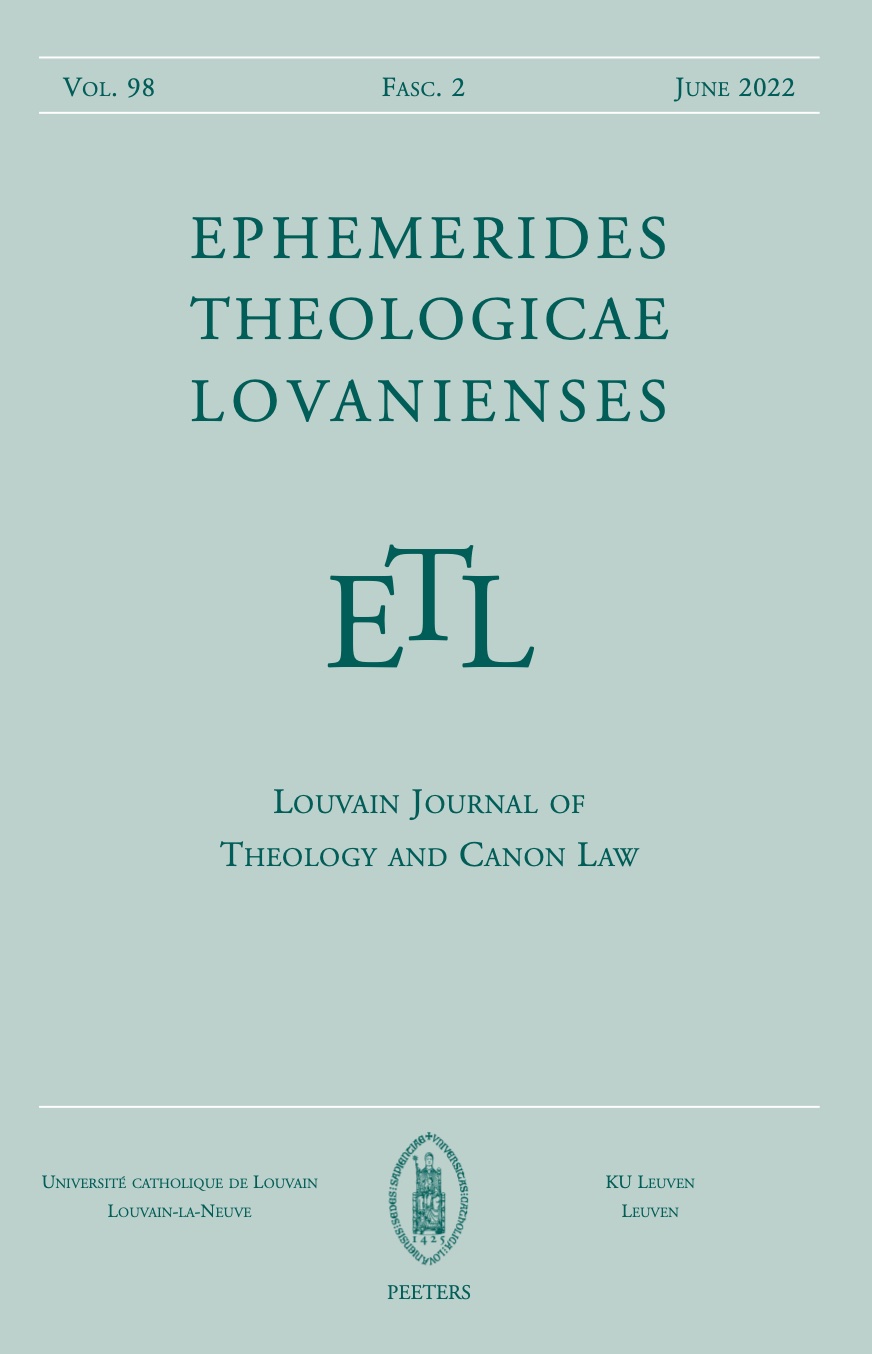 previous article in this issue previous article in this issue | next article in this issue  |

Preview first page |
Document Details : Title: Spuren der synoptischen Verklärungserzählungen in 2 Petr 1,16-18 und in die Offenbarung des Petrus Subtitle: Beobachtungen zur 'Wirkungsgeschichte' der Szene am Berge Author(s): HOPPE, Rudolf Journal: Ephemerides Theologicae Lovanienses Volume: 99 Issue: 4 Date: 2023 Pages: 587-608 DOI: 10.2143/ETL.99.4.3292519 Abstract : The present article examines the influence of the synoptic Transfiguration Narratives on the transfiguration scenes in 2 Peter and the Apocalypse of Peter (AP). The starting point is the transfiguration story in Matt 17,1-9. Through its contextualization with Matt 16,27-28 it authorizes Jesus’ judgmental action (Matt 16,28) based on his proclamation as the Son of God (Matt 17,5). AP picks up this connection through the correspondence of chapters 1-2 and 15-17 with the judgment scene in chapters 3-12, which is broadly elaborated in the middle part. However, it pragmatically aligns the proclamation of Jesus as the Son of God and his subsequent rapture (17.1) with the faithful on the path to their destination in the heavenly realms (17.3). 2 Pet 1,16-18 is also significantly inspired by the leading pretext Matt 16,27-28/17,1-9. For the author of 2 Peter, the belief in the Parousia as such is up for debate. But as in Matt 16,27-28/17,1-9, the transfiguration scene with the proclamation of Jesus as the Son of God has the function of empowering Christ to judge the 'ungodly' at the Parousia. The central message in 2 Peter, however, lies in the Christological intensification of the transfer of divine dignity to the Son of God, who at his coming proves to be saving force for the faithful, but a destructive one for the wicked. The Matthean transfiguration narrative can be assumed to be the basic text for the scenes in AP 17 and 2 Pet 1,16-18. Both authors independently adapted the Matthean model to the situation of their own addressees. The similarities between 2 Peter and AP can to a large extent be explained without a hypothesis of mutual dependence. |
|


